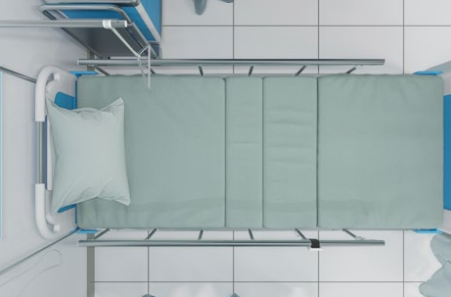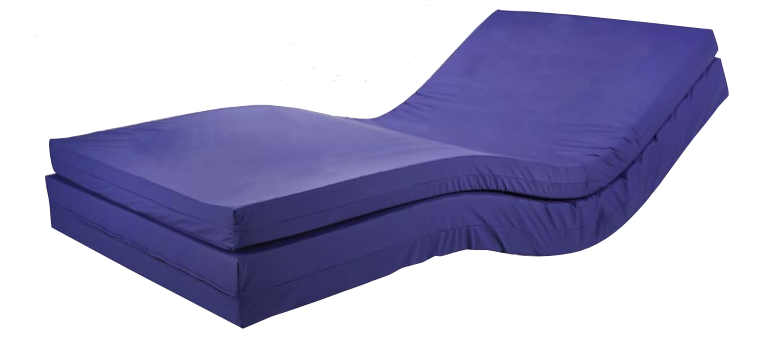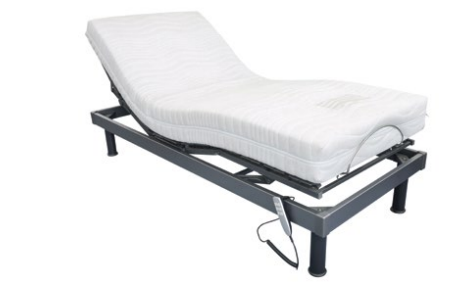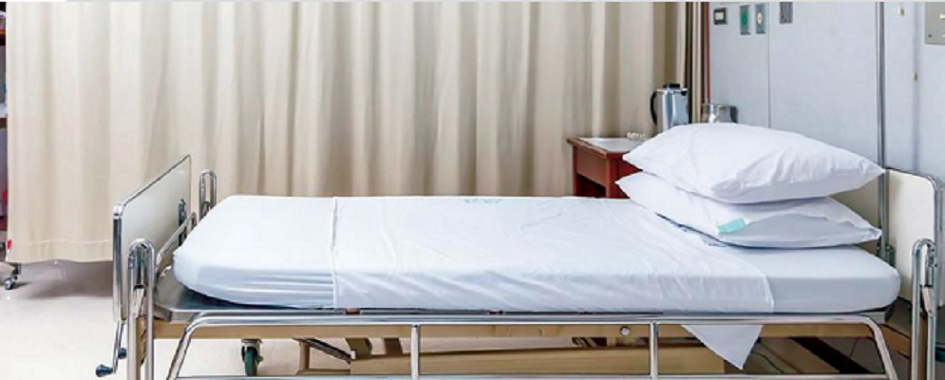In this COVID crisis as the need for beds for patients is increasing day by day, let us take a look at the industry’s response to the situation in providing Medical Mattress and also try to understand the Medical Mattress and its types
Beds, especially hospital beds, have been a critical topic of discussion in India during this COVID crisis. Various state governments across the length and breadth of India are struggling to increase the number of beds to treat the ever-growing number of patients. In this context, beds have become a national obsession of sorts. And where there is a bed, there will always be a mattress.
Not surprisingly, then mattress makers across the world see a surge in demand for their products. Not only because new beds have to be added, but because mattresses have to be continuously replaced due to wear and tear, and hygiene issues. In fact, in the first phase of the lockdown, the government had notified mattress manufacturers as an essential business.
But it is essential to differentiate between the regular mattress and the medical mattress. Medical mattresses are specifically designed for much more workload, and they need to be both waterproof and antibacterial, making it an excellent choice where frequent cleaning is anticipated.
Typical home mattresses are designed for comfort and luxury. Home mattresses are not created with a vision to make them resistant to water spills, or bacterial growth. The comfort factor is higher, and it comes at the cost of hygiene and health.
Hence it is essential to not only distinguish but also discern the difference. Over the past couple of years, one brand of medical mattress has gained a lot of fame and recognition, and those are ortho mattresses. These mattresses are not unique in terms of material manufacture but constructed in a manner that provides firm support to the back while sleeping. Usually, these mattresses are created from memory foam as they can distribute pressure all around the body; it does a fair job of helping to make sure no single part of the body has too much. For this reason, a memory foam mattress is an excellent mattress for bedsores.
Types of Medical mattress
Yet, the mattress that is found in hospitals is not your regular mattresses. The reason for that is reasonably straightforward, regular mattress are not designed to do heavy-duty work and multiple loads at a stretch. The beds used in hospitals need to be not only durable and firm but also antifungal, antibacterial, latex-free and inflammation resistant.
Medical mattresses are different in terms of quality and features to ensure that patients can comfortably sleep over them. There are different types of hospital bed mattresses, including- Foam Mattresses, Innerspring Mattresses, Low Air Loss Mattresses, etc.
Each of these types boasts different features and styles to suit the needs of patients. Foam mattresses are considered good because they are economical and light in weight. In case the patient moves, the mattress will absorb the motion and also handles the weight of the patient’s body. The one aspect that needs to be paid attention to is the weight of the patient height. Also, if the mattress has to be used for epidemic cases, it should ideally be covered with an anti-microbial cover.
On the other hand, innerspring mattresses are usually an economical choice. Crafted with evenly distributed inter-mattress coils, this mattress can either be quite soft or slightly firm, depending on personal preference. Innerspring mattresses are best suited for patients who experience several hours of mobility a day and are not bedridden.
In comparison, foam mattresses are economical, and lighter in weight than an innerspring. While they don’t breathe as well as innerspring, they do absorb some shock from motion.
For patients suffering from pressure ulcers or patients at a high risk of developing bedsores, low-air loss mattresses can provide a necessary form of treatment proven to help them. These mattresses reduce pressure on weight-bearing areas and reduce skin moisture.

The medical mattress is different from normal household mattress. They have different features as per the patients’ requirements with a wide range of costs. They provide a suitable environment for the patients to recover soon
There is yet another variety of medical mattresses that are known as alternating pressure mattresses. They provide the benefits of a low air loss mattress, while also aiding in circulation. They are designed in a manner that allows for the inflation and deflation of air cells, thereby shifting a person’s weight gently, preventing constant pressure on vulnerable bedsores. This type of mattress helps keep lung secretions and other body fluids moving and usually has side perimeters to prevent patients from rolling off the mattress.
The critical factor that works in terms of hospital mattresses is bed sores. Many cases across the world point out the problem. Free circulation of air is necessary when one has bedsores due to resting in bed for extended times. Quality airflow in the mattress also helps to prevent sweating that can affect the skin in the long run in people who spend a lot of time in bed.
A medical air mattress is also ideal for patients with delicate skin who spend most of their time in bed. Low-air loss mattresses, together with alternating mattresses, can help in the treatment and prevention of pressure ulcers. However, their technologies significantly differ, but they serve the same purpose.
A low-airflow mattress is designed to blow air through the spaces in the air cylinders and cover. The movement of the air is significant in that it keeps the skin dry, and it is ideal for people who sweat at night. The airflow also helps to relieve pressure so the body can remain comfortable.
Factors To Consider When Choosing a Hospital Mattress
Thus now that we know the difference between the regular and the unique medical mattress, we can move to the next aspect which is purchasing. If you want to choose a hospital mattress for a patient, there are mainly three factors that you should consider. These include the health of the patient, budget as well as the size of the mattress. There are different types of hospital beds and mattresses as well as customer reviews that can give you information about the best mattress to buy.
Additionally, there are a few factors that one might consider before making the purchase.
What is the need for cleaning: frequent or infrequent?
For entirely bed-ridden patients, a mattress with anti-microbial covers and seams is a must – for both the patient’s and caregiver’s health. Many hospital mattresses on the market currently meet this requirement. One should also look for mattresses and covers which are waterproof and stain-resistant.
What is the duration of the mattress: short-term or long-term?
An essential factor is dependent on the prognosis, how long will the mattress be in use, a patient can use it long-term, as in cases of chronic or degenerative conditions. Or, the patient may simply need a more comfortable option for a period of recovery from illness or injury.
In any of these circumstances, budget and cost is a worthy consideration. If the mattress will only serve a temporary need, it is wise to weigh the cost against features so users don’t overspend on something they will not use in the long run
How mobile is the patient? Is the person using the bed going to spend 12 hours in the bed or more?
If the answer is more, then, buying the right mattress is a necessity and not an option, in that case, more care needs to be taken in matching the appropriate type to avoid bedsores, ulcers, and skin shearing. If the patient is going to spend the majority of their waking hours in bed, an innerspring mattress is not the right choice. A foam mattress that distributes weight evenly would be an ideal choice then. An even better option would be a low air loss or alternating pressure mattress. These do the best job of preventing bedsores and skin shearing.
How is the patient, restless or at ease?
Some hospital mattresses have perimeter guards for added protection against a patient rolling or falling off of the mattress. (For patients who are at high risk for this, hospital bed guard rails are also advisable.)
Usually, restlessness in a patient is a factor of shearing. When the skin rubs against the mattress and gets stuck there, decreasing blood circulation, the result is skin injury below the surface, and eventually, a visible sore. This is shearing. It can be pretty painful and even more tragic if the patient is unable to express due to medical reasons. For restless patients, a smooth mattress cover specifically meant to prevent shearing is recommended.
What else do I need to know about purchasing a medical mattress?
Selecting a medical mattress for a person means considering matters of comfort, health, and budget. Even with plenty of information, it’s not always easy. So that you are not forced to rush into a decision, it’s best to take an input of a medical professional.

Let’s talk about money
Unlike traditional mattress that comes at an affordable price and a range of prices, medical mattress stand out in that regard. Since these mattresses have been specially crafted, keeping in mind the needs and requirements of the patients, they are priced at a higher range. Yet, what is essential to understand about a medical mattress is the need it matches. Patients typically are very vulnerable, and a good mattress that allows them to relax and have comfort goes a long way in getting them back into shape.
Good quality medical mattresses are worth the value for money since they have a particular design to cater to patients with skin breakdown. The cushions are also suitable for patients who spend more time in bed. A high-quality mattress is also durable, and it can last for a long time should you decide to buy it. There are a variety of economical mattresses that can satisfy your needs as long as you know what you want. It is good to choose something that will work for you if you have any preferences.
In addition to the cost factor, one must also consider other factors like shipping and delivery options after buying a medical mattress. Many mattress companies offer convenient services to customers and deliver all purchased goods within a specific period. One can quickly obtain this information from the company’s website before making the purchase.
The other aspect one should wary be about pertains to warranty and returns. Unlike other mattresses, medical mattresses are unique because patients use them. Thus, because there is a hygiene and cleanliness issue involved, therapeutic mattresses have different conditions in terms of returns, etc.
Finally, medical mattresses used in hospitals are standardized for a specific size and fit. There is a sort of uniformity for the hospital beds. In case these mattresses are being bought for home use, it would be much more advisable to buy a hospital bed too, as it will be sturdy enough to bear the weight of the bedding and the patient.
Position the product
Medical mattresses have been in high demand these times. But a crisis can also be viewed as an opportunity by unscrupulous elements. Take the case of Arihant Mattress which advertised a “coronavirus-resistant” mattress placed in a regional daily in March. This mattress was also anti-fungal, dust mite proof, waterproof and so on, including a five-year warranty on the product. The catchphrase of the advert read, “Anti coronavirus mattress pe soya India toh badhega India (India will progress if India sleeps on this anti-coronavirus mattress)”. The mattress was priced at Rs. 15,000 as much as a high-grade branded mattress is. The very day the mattress was advertised, it went viral on social media. Hundreds and thousands of posts on the mattress got the attention of the authorities that got into action over the claim. Police officials registered a complaint; the mattress manufacturer was booked for violating the law under various acts, including the Disaster Management Act. The Advertising Standards Council of India (ASCI) has also reached out to the advertiser, which has since agreed to withdraw its claims.
Over the past three months of the COVID-19 outbreak, we have seen a distinct shift in the behaviour of the people. As the numbers of infected patients rise across the country, so will the customer wariness and fear. Right now, people are holding on to decisions, be they purchase or investment because of the epidemic. In these times, it is incumbent on the company to provide the necessary support in terms of reassurance about the steps that are followed to make the product safe. Since people are also concerned about the functions of the brands, it is pertinent for mattress brands to display their CSR side during these testing times. Companies should come forward and announce donations for the setting up of medical hospitals. There must be proactiveness to be part of a movement. Since the mattress is at the very heart of the medicinal solution, mattress manufacturers must be more vocal about their products, services and the impacts.

Take advantage
Also, existing players should consider the viability of the market and explore launching products. Beyond the scope of hospitals and patients, even general people will be keen to buy a mattress that is anti-fungal and antibacterial. Thus a new line that incorporates all these aspects could be a success for the users. In addition to launching new products, mattress manufacturers should also be more vocal about how they are local. Ever since Prime Minister Narendra Modi has given a mantra to promote domestic manufacturing in India, namely be “vocal for local” mattress companies should seize this opportunity to display their local manufacturing strength and acumen.
In the end, medical mattresses as a product line will grow over the coming years. Thanks to the COVID-19 epidemic, people have realized the need for a medical mattress and how it can be useful not only at hospitals but also at homes. Even when the outbreak becomes a thing of the past, these learnings will stay.


